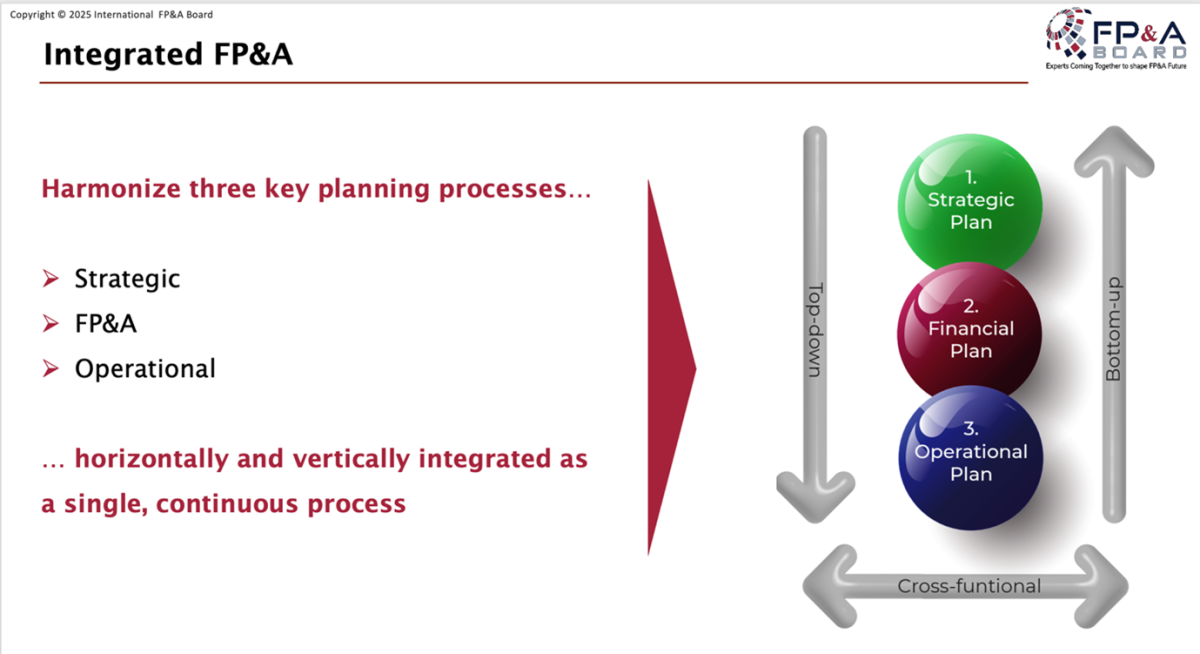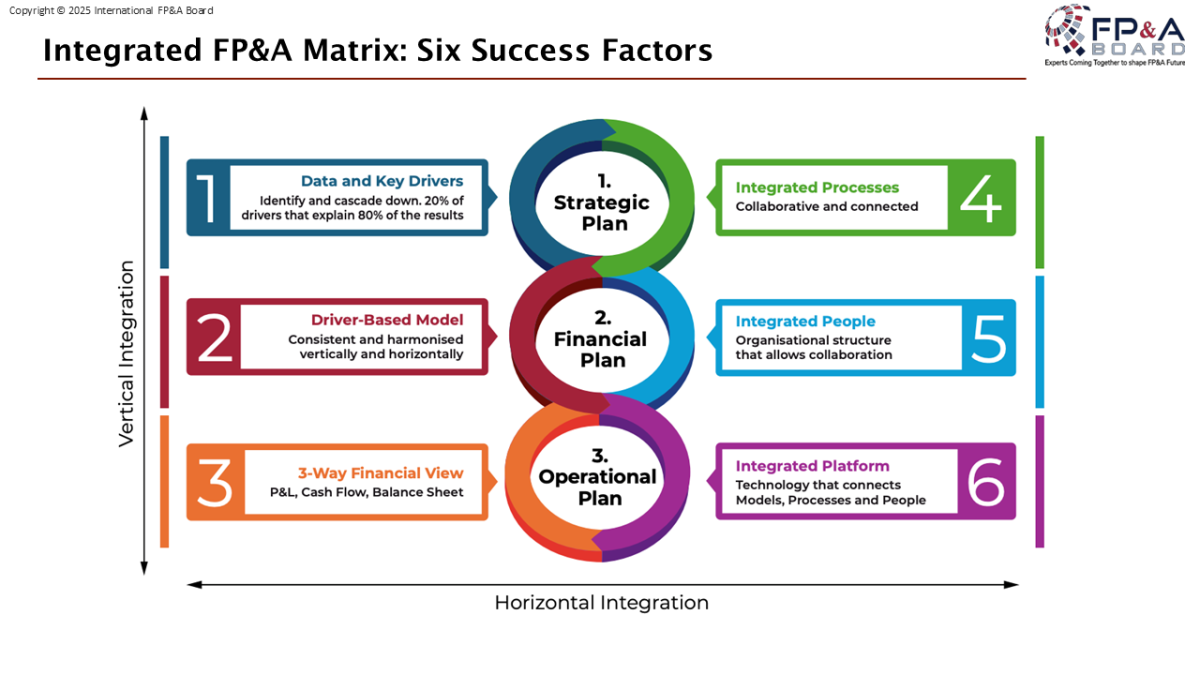The Miami FP&A Board met on March 27 at Expansive Biscayne in Downtown Miami to discuss Moving from FP&A to Extended Planning and Analysis (xP&A).
The meeting was sponsored by QueBIT Consulting in partnership with CFGI.
The Board engaged in a rich discussion centred around four critical themes:
- The top challenges currently facing FP&A teams
- Clear definitions and real-world implications of xP&A
- Success factors for building an integrated FP&A/xP&A model
- Concrete, practical steps toward successful xP&A implementation
To kick things off, participants were surveyed on their most pressing FP&A challenges. The responses painted a familiar yet urgent picture:
- Data collection, quality and integration
- External/internal uncertainty and volatility
- Agility and adaptability
- Communication
- Maintaining engagement and accountability
- Training and educating people
- Timely and collaborative scenario planning
- Effective tools and technology.
Despite diverse business segments represented by the Board, data quality and integration continue to be collectively our greatest challenge (consistent with the 2024 FP&A Trends Survey, which reflects 45% of FP&A’s time is spent on data collection and validation with only 1/3 of FP&A’s time spent on high value-adding activities).

Figure 1
We recognise FP&A’s role SHOULD be:
- optimising decision-making across our organisations’ departments/business units
- utilising key relevant metrics
- maintaining one, in near real-time, data/forecast “source of truth” that the entire organisation has aligned on
- with forecast scenarios that easily flex relevant metrics to factor in uncertainty and
- immediately reflect impacts to three-statement financial models (PnL, Cashflow, Balance Sheet) as well as operational views (customer, product, operating metric impacts) essential for managing the company’s value.
How do we accomplish this Best-in-Class goal? Achieving this vision means moving beyond traditional FP&A into a Best-in-Class xP&A state—a collaborative, agile model where data and planning span all business functions.

Figure 2. The 2nd Miami FP&A Board, March 2025
What is xP&A?

Figure 3
An Extended Planning & Analysis (xP&A) framework enables organisations to operate with a single source of truth — a unified environment where data, financial forecasts, and operational insights are integrated and accessible across all departments. This centralisation fosters alignment, improves collaboration, and enhances strategic decision-making.
The “x” in xP&A stands for cross-functional planning, meaning every part of the organisation — Operations, Sales, Marketing, Supply Chain, Finance, HR, and beyond — actively contributes to developing integrated plans that align with overarching business goals. Rather than working in silos, these departments co-create operational and financial roadmaps that reinforce the company’s strategic direction.
The true power of xP&A lies in its ability to synchronise operational shifts with financial implications in real-time. For instance, if a key supplier suddenly ceases operations, that disruption can immediately cascade through relevant departments — Supply Chain, Sales, Marketing, HR — and reflect in operational and financial KPIs, including cash flow forecasts. This seamless responsiveness empowers the organisation to anticipate risks, adjust strategies, and maintain agility in a dynamic environment. It is critical that the company’s processes and tools directly support this effort, preferably unified by technology that manages workflow and enhances the visibility of the process to stakeholders. Ideally, in xP&A, all operational and financial data run on the same system.
The journey to xP&A begins with integrated FP&A — but requires deliberate investment across people, process, and technology.

Figure 4. The 2nd Miami FP&A Board, March 2025
Six Success Factors for Integrated FP&A/xP&A

Figure 5
Integrated FP&A incorporates strategic, financial and operational levels of planning both horizontally (across functions) and vertically (both top-down and bottom-up). To gain success with an integrated FP&A/xP&A model, six success factors have been identified:

Figure 6
- Key data and business drivers must be identified (tag the 20% that explain 80% of results)
- Driver-based models that are consistent across the organisation in definition and application
- Three statement models, calculating a PnL impact without a cash and balance sheet view, can be detrimental
- Integrated processes; flow needs to exist from beginning to end, with all impacted parties involved
- Integrated people; key players collaborate and agree (vs unilateral planning and unknown company financial expectations)
- Integrated platform; technology connects processes, people and plans for the unified source of truth
Turning Vision into Action: Practical Steps to Implement xP&A
We broke out into work groups to discuss and identify key practical steps to implementing xP&A in three primary areas. These areas and steps are:
Data and Models
- Establish data quality, availability and integrity
- Identify and integrate business drivers throughout the organisation/strategic flow
- Establish master data governance
- Cross-functional data ownership (single source of truth)
Systems and Processes
- Standardised systems and processes (the fewer, the better)
- Gain organisational alignment and discipline
- Change management and leadership alignment
- Define system requirements and KPIs
People and Culture
- Foster TRUST with shared vision and commitment
- Provide education and upskilling
- Understand and communicate incentives
- Change management

Figure 7. The 2nd Miami FP&A Board, March 2025
As FP&A leaders, we are passionate about delivering insights and actions that help our organisations achieve success. In our forum, we discussed the obstacles we encounter in optimising our effectiveness, utilising integrated FP&A/xP&A to address and overcome those obstacles and key steps in xP&A implementation. We are excited to continue these conversations and learn from one another as we take the steps to move from FP&A to best-in-class xP&A.







